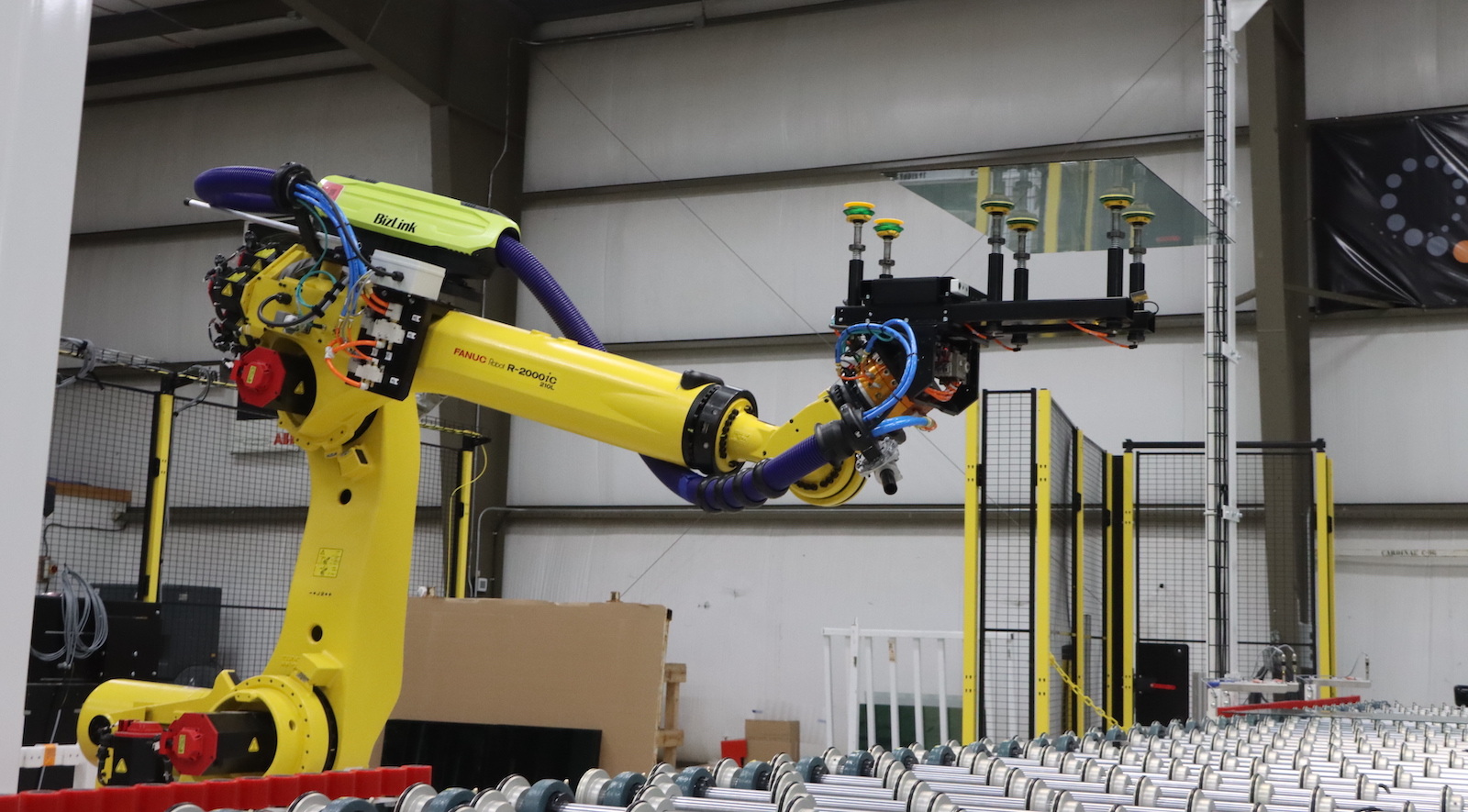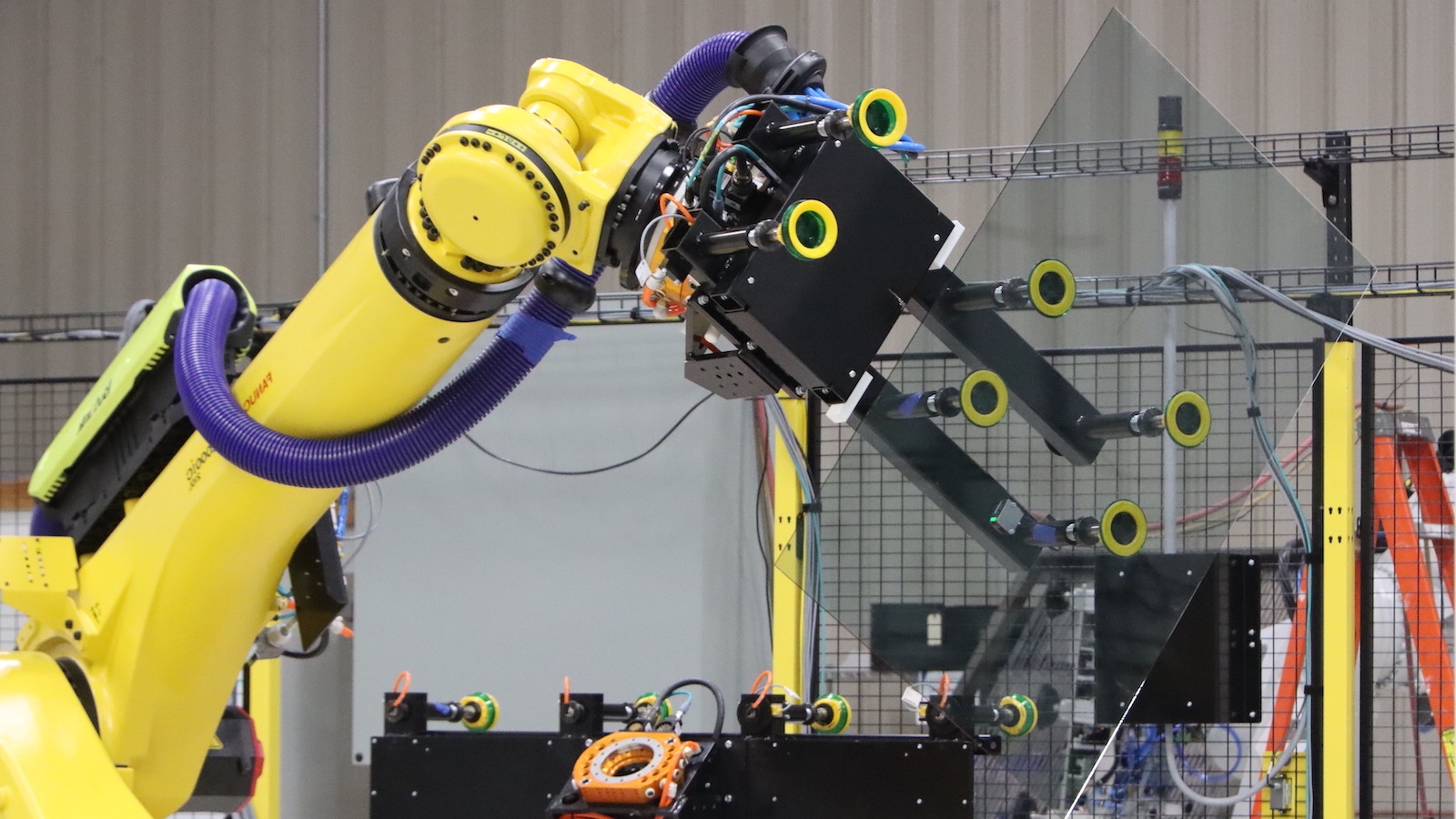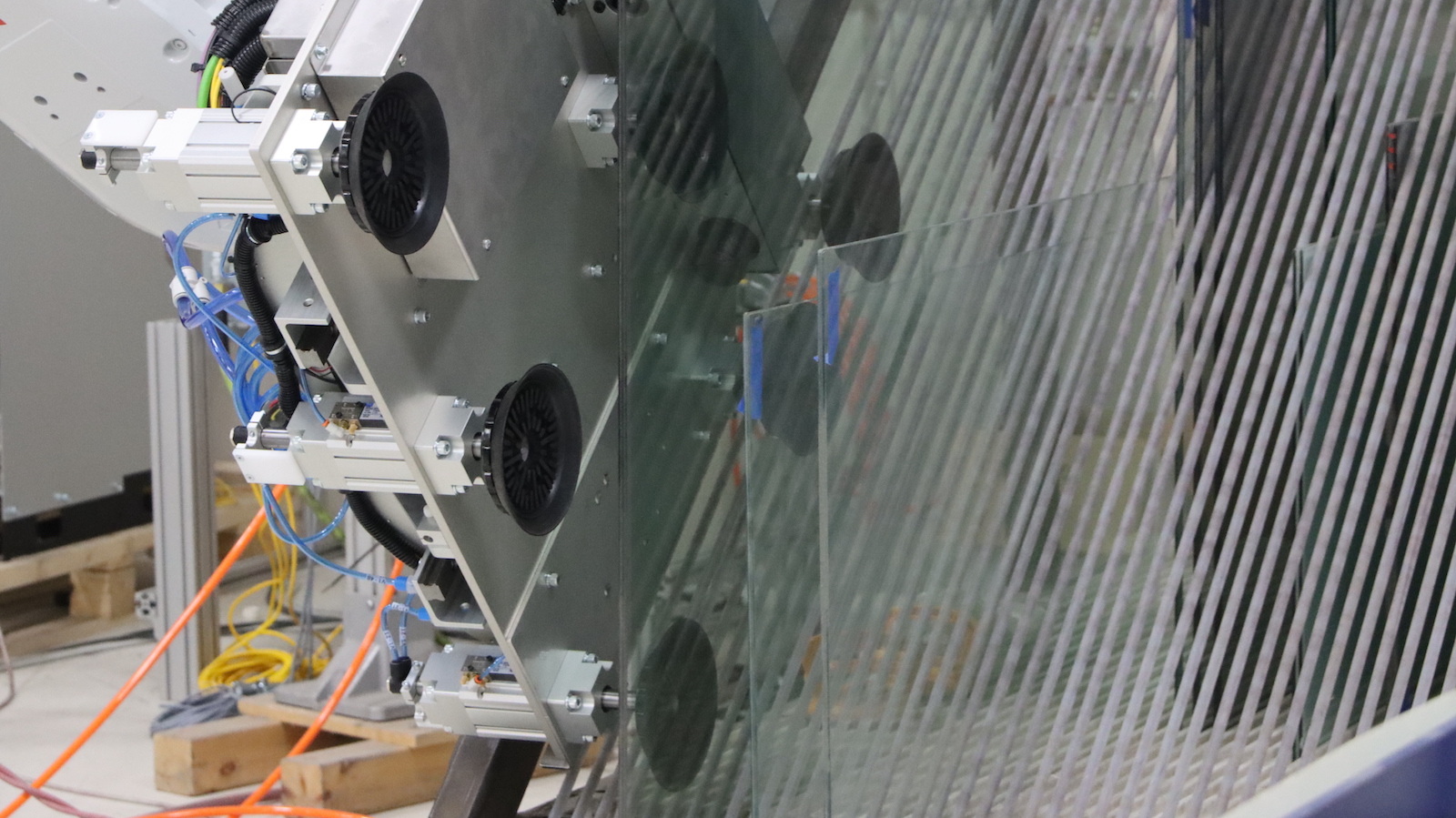Optimizing Glass Line Load and Unload with Robotic Automation
For decades, automation has shaped manufacturing and continues to do so. But the glass industry has only recently begun to leverage robotics in its production processes.
Why? Handling large glass panels—from loading onto conveyors to unloading for crating—poses inherent risks, and the complexity of the tasks often requires the human touch.
Today, however, glass line load and unload systems help streamline these traditionally labor-intensive processes. This article explores the benefits and challenges of designing automation systems and provides insights into how automated solutions enhance safety, efficiency, and reliability in the glass industry.
EXPLORE: Glass Industry Automation Solutions
How Do Glass Line Automation Systems Work?
Glass line feed systems are designed to automate loading and/or unloading tasks. A glass load line, for example, typically picks up flat glass panels that are stacked vertically on a rack and carefully positions each piece onto a horizontal conveyor.
The opposite applies to unloading lines. The robot with specially designed end-of-arm tooling picks up the glass panel from a conveyor, often using camera assistance to ensure precise placement, and moves it to a vertical rack or another designated area.
Handling hundreds or even thousands of glass panels per day, these robotic systems must function with high precision and anticipate the unexpected to keep up with production demands. Want to see a glass-handling system in action? Watch our video!
Benefits of Glass Line Automation
Glass handling automation appeals to manufacturers for many reasons, including:
- Safety. Glass handling is inherently dangerous, and there are more recordable injuries per year than in the construction or chemical manufacturing industries. In addition to the risk of lacerations from sharp glass, the repetitive movements required by operators can lead to ergonomic injuries over time. Robots eliminate the need for workers to handle heavy, sharp-edged glass manually.
- Productivity. Automation can boost productivity, allowing more glass to be handled in less time with far less risk of injury or breakage.
- Labor Shortages. With skilled labor becoming increasingly difficult to find, automation offers a reliable, long-term labor solution that minimizes dependency on manual labor for hazardous tasks. Workers can be assigned to safer and more fulfilling jobs throughout a facility.
RELATED: How to Improve Glass Industry Safety with Automation
Key Challenges in Robotic Glass Handling
A primary challenge in glass handling automation is designing a system that remains robust and resilient when it encounters unexpected issues. A robot must navigate various scenarios that are out of the ordinary—whether a piece of glass arrives broken or is positioned at an unexpected angle. Misaligned or damaged glass poses the risk of crashes if the robot isn’t holding it as expected, potentially resulting in damage or operational delays.
A robot’s movements depend on where the glass is supposed to be. If it “thinks” it’s holding a large piece of glass in the center but it’s actually holding it on the edge, there could be several feet of glass protruding outside the safe zone. Additionally, a large piece of glass can weigh hundreds of pounds and that extra weight on one side could cause the robot to lose its grip.
Intelligent sensors and 3D cameras can help mitigate these risks by detecting the position and condition of the glass. The robot can alert someone of an unresolvable issue when necessary. Even so, there are rare occasions when a robot might not detect an anomaly. That’s why, when programming the system, a robotic engineer must ensure that it "fails safely," meaning if the glass slips, the robot drops it straight down rather than in an unpredictable way that could pose injury risks.
Training operators on the system and ensuring they understand its controls is essential. The challenge comes when there is employee turnover. With adequate training, a well-designed user interface and robust programming help operators of all experience levels operate the system safely. An experienced and reputable robotics company will ensure proper training as part of its commitment to ongoing customer support after the installation.
RELATED: Why A3 Safety Certification Matters for Robotic Integrations
Leverage Glass Line Automation Experts
Some of the nation’s leading glass manufacturers rely on QComp’s expertise in the glass industry to enhance safety, throughput, and employee satisfaction. Our team is committed to providing personal, dedicated support and unrivaled engineering and programming expertise.
Unlike companies with complex service channels, QComp assigns a single project lead who remains the main point of contact, helping to ensure consistency and a personalized approach. A facility or equipment manager works with a QComp associate with whom they’ve built rapport and have formed a professional relationship. Want to start a conversation and explore glass-handling robotic solutions for your facility? Contact the team today for a consultation.
Share this
You May Also Like

Cable Management in Glass Line Automation: An Overlooked Necessity
Learn how QComp and BizLink tackle cable durability, uptime, and safety challenges in glass robotic automation, redefining efficiency in glass manufacturing lines.

Improving Glass Industry Safety: How Automation Helps Prevent Injuries
How to improve safety in the glass manufacturing industry using robotic automation. Explore how a leading robotics integrator is solving the toughest challenges.

Automation Challenge: Glass Industry Harp Rack Loading
Learn how QComp’s innovative harp rack unloading automation improves glass industry safety, reduces risks, and boosts precision and productivity.
